ACM Multimedia Conference 2023
Area Chair for ACM Multimedia Conference 2023, Ottawa, Canada, October 2023.

Professor @ University of Verona, co-founder and scientific advisor of EVS Embedded Vision Systems S.r.l., former director of PAVIS @ Italian Institute of Technology.
Computer Vision and Machine Learning researcher and passionate. Also working in ML + Neuroscience & Psychology.
Curious by nature.
Area Chair for ACM Multimedia Conference 2023, Ottawa, Canada, October 2023.
Vittorio Murino is full professor @ University of Verona, Dept. of Computer Science, Verona, Italy, and visiting scientist at Pattern Analysis & Computer Vision (PAVIS) department in IIT. He was the former director of the Pattern Analysis & Computer Vision (PAVIS) from 2009 to 2019 (http://pavis.iit.it). From 2019 to 2021, he joined the Ireland Research Centre, Huawei Technologies (Ireland) Co. Ltd., Dublin, Ireland, as Senior Video Intelligence Expert.
Laurea degree in Electronic Engineering, University of Genova, Italy, 1989 (summa cum laude).
PhD in Electronic Engineering & Computer Science, University of Genoa, 1992 (topics in Signal and Image Processing, Computer Vision, Pattern Recognition).
Post-Doctoral Fellowship in Signal & Image Processing and Computer Science, Department of Biophysical & Electronic Engineering (DIBE), University of Genova, 1994 – 1995.
Assistant Professor from 1995 to 1998, University of Udine, Italy.
Associate Professor from 1998 to 2000, University of Verona, Italy.
Full Professor since 2000, University of Verona, Italy.
Chairman of Department of Computer Science (Dipartimento di Informatica) of the University of Verona from 2001 (year of foundation) to 2007.
Director of the Pattern Analysis & Computer Vision (PAVIS) department, Istituto Italiano di Tecnologia (IIT), Genova, Italy, from 2009 to 2019. Web: https://pavis.iit.it
Senior Video Intelligence Expert @ Ireland Research Centre, Huawei Technologies (Ireland) Co. Ltd., Video Competence Centre, Dublin, Ireland, from 2019 to 2021.
Promoter and founder in 2005 of eVS embedded Vision Systems S.r.l., the first start-up company of the University of Verona. Web: http://www.embeddedvisionsystems.it/
Appointed inventor for 6 patents.
Associate Editor of the following journals:
Computer Vision and Image Understanding (since 2014).
Machine Vision and Applications (since 2006).
Frontiers of Computer Vision (since 2022).
Member of the Advisory Boad of the Journal of Imaging, an open-access MDPI journal (from 2021).
Pattern Analysis and Applications (2004-2020).
IEEE Transactions on Cybernetics, formerly IEEE Transactions of Systems, Man, & Cybernetics, Part B: Cybernetics (1999-2016).
Pattern Recognition (1999-2016).
ELCVIA, an international electronic journal on research and applications in Computer Vision and Image Analysis (2001-2010).
Author/co-author of more than 400 papers in computer vision, pattern recognition, machine learning, image processing, and underwater acoustic imaging published in refereed international scientific journals or presented at the major conferences.
IEEE Fellow, the Institute of Electrical and Electronics Engineers (since 2022); formerly, IEEE Senior Member (since 2002).
IAPR Fellow, International Association of Pattern Recognition (since 2006).
ELLIS Fellow, European Laboratory for Learning and Intelligent Systems (since 2021).
Main expertise on computer vision and pattern recognition, machine learning, image and signal processing, and neuroimaging (data analysis). His main research focus lies now on deep learning, specifically on domain adaptation and generalization, multi-modal deep learning models, learning with privileged information, zero and few-shot learning, learning with imbalance/noisy data in general, and disentangling representation models.
Particular interest for social signal processing approaches for the analysis of human behavior, with main applications related to surveillance and security, human-human and human-machine interaction, ambient intelligence, and retailing. Also major experience in standard industrial applicative domains such as visual inspection and automation.
H-number 60 (2021), by Google Scholar http://scholar.google.com/citations?user=yV3_PTkAAAAJ
H-number 44 (2021), by Scopus https://www.scopus.com/authid/detail.uri?authorId=7006595496
ORCID: https://orcid.org/0000-0002-8645-2328
My CV and main publications (pdf), updated at May 2022
Expertise on computer vision and pattern recognition, machine learning, image and signal processing, and neuroimaging (data analysis).
Main research focus lies now on deep learning, specifically on domain adaptation and generalization, multi-modal deep learning models, learning with privileged information, zero/one/few-shot learning and imbalance data in general, and disentangling representation models. Related applications involve classification and recognition in general, in supervised and unsupervised scenarios, including (fine-grained) activity recognition.
Particular interest in multimodal social signal processing approaches for the analysis of human behavior, with main applications related to surveillance and security, human-human and human-machine interaction, ambient intelligence, and retailing. Also major experience in standard industrial applicative domains such as visual inspection and automation.
Concerning the biomedical area, the main work and interest lie in neuroimaging data analysis, namely Magnetic Resonance Imaging and, in particular, in the study of neural correlates responsible of (social) behavior, with applications in behavioral neurological pathologies (e.g., schizophrenia, autism, etc.) and brain function understanding in general. We deal with these problems using a approach, specifically by integrating structural and functional connectomics data/information.
Recent interest in the use of neuroimaging data in complex visual recognition tasks. In short, the driving idea is to exploit neuroimaging data (electroencephalography, EEG, at first instance) and visual data to improve the performance of deep learning models: the goal is to assess whether this type of information is useful to tackle difficult recognition tasks either when processed together with visual data, or when used as privileged data available only at training time but not at test time.
Former experience in underwater vision (acoustical and optical), data fusion and sensory integration with applications on (underwater) object detection and recognition, object and scene reconstruction.
Google Scholar http://scholar.google.com/citations?user=yV3_PTkAAAAJ
Scopus https://www.scopus.com/authid/detail.uri?authorId=7006595496
My CV and main publications (pdf), updated at May 2022
To date, I co-authored more than 400 papers, either journals or conferences, and books.
Accessing public publication repositories such as Google Scholar, Scopus, and DBLP is the best way to look into my scientific production. These are the links:
A list of the books, edited or authored, is also reported here below.
Algorithmic Advances in Riemannian Geometry and Applications: For Machine Learning, Computer Vision, Statistics, and Optimization. Hà Quang Minh and Vittorio Murino (Eds), Springer, Berlin, 208 pages, ISBN 978-3-319-45025-4, 2016.
Group and Crowd Behavior for Computer Vision. 1st Edition. Vittorio Murino, Marco Cristani, Shishir Shah, Silvio Savarese (Eds), Academic Press, 438 pages, ISBN: 9780128092767, 2017.
Multimodal Scene Understanding: Algorithms, Applications and Deep Learning. M.Y. Yang, B. Rosenhahn, V. Murino (Eds.), Academic Press, 525 pages, Paperback ISBN: 9780128173589, 2019.
Hà Quang Minh and Vittorio Murino. Covariances in Computer Vision and Machine Learning. Synthesis Lectures on Computer Vision, Morgan & Claypool, Vol. 7, No. 4, Pages 1-170 (https://doi.org/10.2200/S00801ED1V01Y201709COV011). Paperback ISBN: 9781681730134, November 2017.
Industry-funded project
Client: Ansaldo Energia S.p.A.
2018-2020
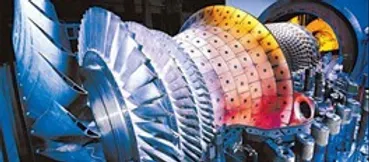
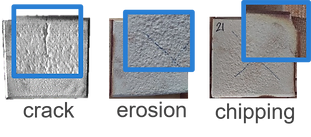
Industry-funded project
Client: Luxottica S.p.A.
2018-2019
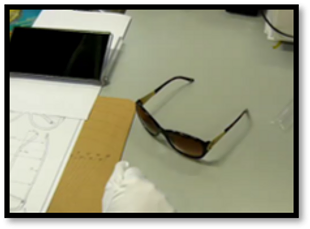
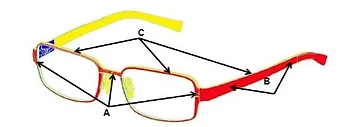
Joint Laboratory
Client: Camozzi Group
2018-2022

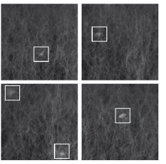

Industry-funded project
Client: GE AVIO S.r.l.
2014-2017
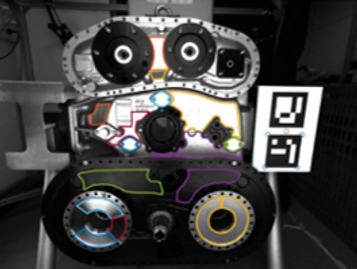
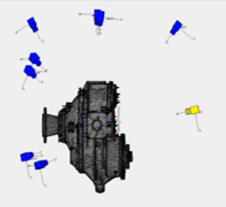
European Commission (EC) funded project
Future & Emerging Technologies (FET) Proactive initiative: Neuro-Bio Inspired Systems
Information and Communication Technology (ICT)
7th Framework Programme, 2013-2016
Project Coordinator

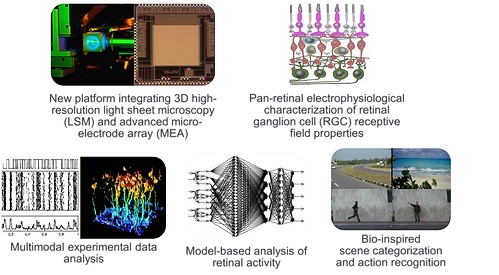
My teaching activities at University of Verona started in 1998.
Since then, I proposed, organized or re-structured several courses for the Bachelor and Master (“Laurea Magistrale”) degrees related to the Visual Computing curriculum, such as Image Processing, Human-Machine Interaction, Computer Vision, Pattern Recognition and Machine Learning.
From 2009 to 2019, I was on-leave from University of Verona while working at the Italian Institute of Technology, leading a reasearch group on Computer Vision and Machine Learning, without almost any teaching duties.
I came back to University of Verona in 2019, starting again my teaching activities; find below the courses I was teaching since then.
2022-2023
University of Verona
Machine Learning & Artificial Intelligence – 9 Credits (7+2, Theory+Lab)
Master degree in Computer Engineering for Robotics and Smart Industry
Link
Computer Vision & Deep Learning – 6 Credits (4+2, Theory + Lab)
Master degree in Artificial Intelligence
Link
2021-2022
University of Verona
Machine Learning & Artificial Intelligence – 9 Credits (7+2, Theory+Lab)
Master degree in Computer Engineering for Robotics and Smart Industry
Deep Learning – 6 Credits (assigned 1)
Master degree in Computer Engineering for Robotics and Smart Industry
2020-2021
University of Verona
Machine Learning & Artificial Intelligence – 9 Credits (7+2, Theory+Lab)
Master degree in Computer Engineering for Robotics and Smart Industry
2019-2020
University of Verona
Machine Learning & Pattern Recognition – 6 Credits (4+2, Theory+Lab)
Master degree in Computer Science and Engineering
If you are interested in opportunities in EVS Embedded Vision Systems company, send an email to:
If you are interested in collaborations with or opportunities at PAVIS@IIT, send an email to: